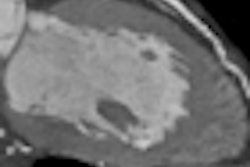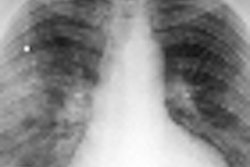X-rays used during CT exams may cause some implanted and external electronic medical devices to malfunction, according to an advisory letter released yesterday by the U.S. Food and Drug Administration (FDA).
The FDA has received a small number of reports citing cases in which CT scans may have interfered with pacemakers, defibrillators, neurostimulators, implanted or external drug infusion pumps, cochlear implants, or retinal implants, according to a letter dated July 14 from Dr. Daniel Schultz, director of the FDA's Center for Devices and Radiological Health. The letter clarifies that most people with electronic medical devices do not have any adverse effects from CT scans.
Adverse events have included:
- Unintended shocks from neurostimulators
- Malfunctions in insulin infusion pumps
- Changes in pacemaker output pulse rate
Problems with electronic medical devices that might be caused by CT scanner interference include:
- False signals, including cardiac defibrillation pulses
- Misinterpretation of signals produced by the x-rays as actual biological signals
- Missed detection of actual biological signals
- Resetting or reprogramming of device settings
Why are these cases showing up now? More interference between CT and these electronic devices are being reported because CT is being used more frequently, newer machines have higher dose-rate capability, better reporting systems have been introduced to the market, and more people are using the devices, the FDA said.
To avoid adverse events, radiologic technologists should use CT scout views to determine if patients have any implanted or externally worn electronic medical devices, and if so, how close they are to the scan range. For procedures in which a device is in or near the scan range, the technologist should determine the type of device, try to move external devices out of range, ask patients with neurostimulators to turn the device off temporarily while the scan is done, use the lowest possible x-ray tube current to get the required image quality, and ensure that the x-ray beam doesn't linger over the device for more than a few seconds.
If a CT procedure requires scanning over the device for more than a few seconds (as in CT perfusion or interventional exams), medical staff should be ready to take emergency measures to treat potential adverse reactions.
And after the exam is over, patients should turn the device back on, check that it's functioning properly, and contact their healthcare provider as soon as possible if the device is not working as usual.
Schultz's letter also stated that the FDA requires hospitals and other facilities to report deaths and serious injuries associated with the use of medical devices; medical imaging professionals should follow the reporting procedure established by their facility and monitor MedWatch, the FDA safety information and adverse event reporting program.
By Kate Madden Yee
AuntMinnie.com staff writer
July 15, 2008
Related Reading
CT experts grapple with rising concerns about radiation dose, May 14, 2008
Study evaluates radiation dose, cancer risk for whole-body PET/CT, May 9, 2008
Researchers recommend alternatives to CT, April 15, 2008
ACC news: CTA dose varies widely, could be lower, April 2, 2008
Prospective gating drops cardiac CT radiation dose, March 10, 2008
Copyright © 2008 AuntMinnie.com





















